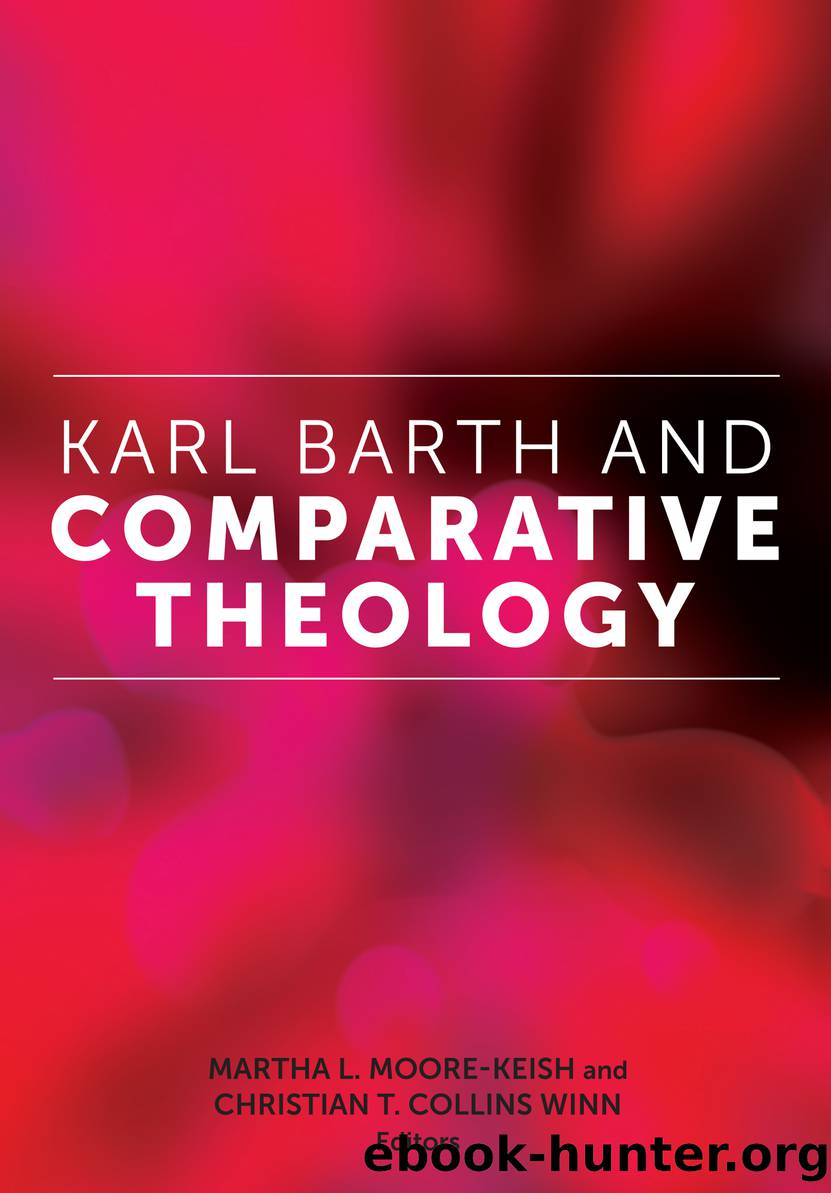Karl Barth and Comparative Theology by unknow

Author:unknow
Language: eng
Format: epub
Publisher: Fordham University Press
6â â Karl Barth and Parousia in Comparative Messianism
Kurt Anders Richardson
Christian theology in the twentieth century turned significant attention to eschatological reflection. Under Albert Schweitzerâs devastating critique at the turn of the century, the common nineteenth-century portrait of âthe historical Jesusâ as a most enlightened moralist in cultural evolution had to give way to the prophetic Jesusâs âthoroughgoing eschatologyâ1 that characterized the gospels of the New Testament. This course correction in theology highlighted the rift that had grown up between biblical studies and theology. While Karl Barth would radically disagree with Schweitzer in many ways, his theology, and its abundant exegetical features, captures the eschatology of Jesus throughout. Indeed, it may be argued that one of the best ways to understand Barthâs entire project in the Church Dogmatics is through its âeschatological realism.â2 The âeschatologicalâ here refers to the fact that revelation and its redemptive realization in re-creation through Christ is the critical ground for Barthâs theological program.
Christianity, of course, is not the only religious tradition with a strong eschatological dimension. All of the Abrahamic faiths (Judaism, Christianity, Islam) have eschatologies based on common messianic roots. âMessianism,â a term most commonly found in academic Judaism, refers to Jewish doctrinal systems expounding belief in a Messiah figure, shaped in large part by the âKing Davidâ narratives and prophetic allusions of the Old Testament. Messianism includes a cosmological perspective that is âmessianic,â descriptive of the events and universal implications of this Jewish figure and fulfillment of the End of Days, the consummation of the divine plan for redemption and final judgment. âChristology,â the theology of the person of Jesus Christ in Christianity, is also justifiably termed âChristian messianismââgiven its marked âDavidicâ elements (see Rom. 1:1â4). Jesus Christâs second coming or appearing (parousia) brings about the End of Days. As discussed more fully below, the Shiâa system of belief in the Mahdi (from muhtadun âthe rightly guided one(s)â (see Qurâan 3:51â56, 90; 6:82; and 4:175) or hidden (âoccultedâ) Twelfth Imam and his appearing (parousia) at the End of Days to accomplish much the same divine goals, is justifiably termed âIslamic messianism.â All three faiths present scriptural narratives of their own, but with many overlapping features of an âAbrahamic messianismâ that are conspicuously related to a common core of Judaic conceptuality and expectation. Typical of these narratives are their âapocalypticâ features, end time cosmological events signaling the End of Days in often cataclysmic terms.
Parousia is a common term in biblical and theological studies in Christianity to refer to the second coming of Jesus. But increasingly Islamic scholars have been using the term for their own eschatological visions. By the end of the first millennium, soteriological features inherent in the eschatology of the Qurâan began to manifest themselves in narratives of redemptive suffering, which led to elaborations upon the parousia of Jesus as Messiah accompanied by the Mahdi who would signal to the Muslim faithful that the end of the age had arrived.3 Shiâa theology has the most developed Muslim messianic theology (and eschatology), and as will be explored here, contains many poignant parallels to the Christian eschatology of Barth.
Download
This site does not store any files on its server. We only index and link to content provided by other sites. Please contact the content providers to delete copyright contents if any and email us, we'll remove relevant links or contents immediately.
The Hatha Yoga Pradipika (Translated) by Svatmarama(2497)
Real Sex by Lauren F. Winner(2480)
The Holy Spirit by Billy Graham(2425)
The Secret Power of Speaking God's Word by Joyce Meyer(2257)
The Gnostic Gospels by Pagels Elaine(2033)
Devil, The by Almond Philip C(1906)
23:27 by H. L. Roberts(1894)
Jesus by Paul Johnson(1892)
The Nativity by Geza Vermes(1853)
All Things New by John Eldredge(1786)
Chosen by God by R. C. Sproul(1766)
Angels of God: The Bible, the Church and the Heavenly Hosts by Mike Aquilina(1630)
The Return of the Gods by Erich von Daniken(1578)
Angels by Billy Graham(1555)
Evidence of the Afterlife by Jeffrey Long(1462)
Knowing God by J.I. Packer(1436)
The Gnostic Gospel of St. Thomas by Tau Malachi(1414)
Victorian Sensation by James A. Secord(1410)
How To Be Born Again by Billy Graham(1407)
